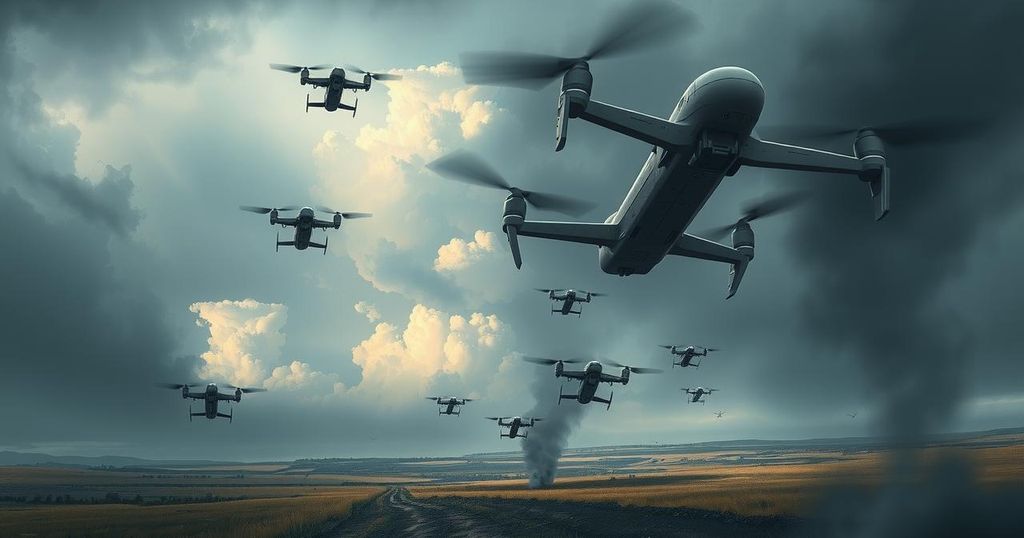World news
ASIA, CW, DEFENCE, DONBAS, ENERGY INFRASTRUCTURE, EUROPE, EUROPE/ASIA, KOREA, NORTH, KURSK, KYIV, MILITARY, MISSILE ATTACK, MOSCOW, NEW YORK TIMES, OLEKSII, PYONGYANG, RBC - UKRAINE, RUSSIA, RYU SEONG - HYE, SOF, SUDZHA, THE NEW YORK TIMES, UKRAINE, US, VLADIMIR PUTIN, VOL, WAR, ВОЛОДИМИР З
Daniel O'Connor
0 Comments
The Rising Tide: North Korean Militarization in the Kursk Conflict
North Korean troops, supported by Russian drone units, have gained ground in the Kursk region against under-resourced Ukrainian forces. An estimated 12,000 North Koreans face high casualty rates, battling under severe pressure to avoid capture. Ukraine’s strategic position remains precarious as North Koreans adapt to modern warfare tactics, aided by advanced Russian technology.
Recent developments indicate that North Korean troops, backed by advanced Russian drone units, have significantly impacted the military landscape in the Kursk region of Russia, previously occupied by Ukraine. Ukrainian commanders, such as Oleksii, report being heavily outnumbered, facing a ratio of one Ukrainian to approximately eight North Korean soldiers. This formidable presence has been further bolstered by persistent airstrikes and artillery bombardments, complicating the Ukrainian defensive efforts.
An estimated 12,000 North Korean soldiers have been deployed since January, with casualties reported to include over 300 fatalities and more than 2,700 injuries. The recent offensive has led to substantial territorial regains for Russia, with North Korean forces reclaiming over 60 percent of the land that had been held by Ukrainian forces. Strategically, the retention of Kursk is critical for Ukraine, as it serves as leverage in negotiations concerning the Donbas region.
The intensity of the North Korean soldiers’ commitment to their mission has been heightened by orders emphasizing the dire consequences of capture—predominantly threats against their families. Ryu Seong-hyeon, a defector from North Korea, explains that the soldiers view capture as a significant disgrace, leading to a mindset that prioritizes death over capture.
Reports suggest that North Korean troops have been adapting, receiving training to enhance their efficacy in modern warfare, particularly in conjunction with advanced drone operations. However, earlier assessments indicated a lack of readiness for such conditions, with soldiers frequently overwhelmed by aerial attacks.
The North Korean military presence has proven effective, having breached Ukrainian defenses in locales such as Kurylvka. This phenomenon is compounded by the use of state-of-the-art fiber-optic drones deployed by Russia, which have demonstrated a marked capability to disrupt Ukrainian supply lines and obfuscate traditional signals, thus exacerbating the challenges faced by Ukrainian forces.
The involvement of North Korean troops in the Kursk region has introduced significant challenges for Ukrainian military operations, marked by staggering disparities in manpower and support from advanced drone technology. The psychological and strategic implications of their deployment, alongside the substantial casualties they have experienced, underline the evolving nature of this conflict. Furthermore, the adaptation of these forces to modern warfare tactics suggests a troubling shift that could affect the trajectory of this ongoing conflict.
Original Source: www.theweek.in




Post Comment